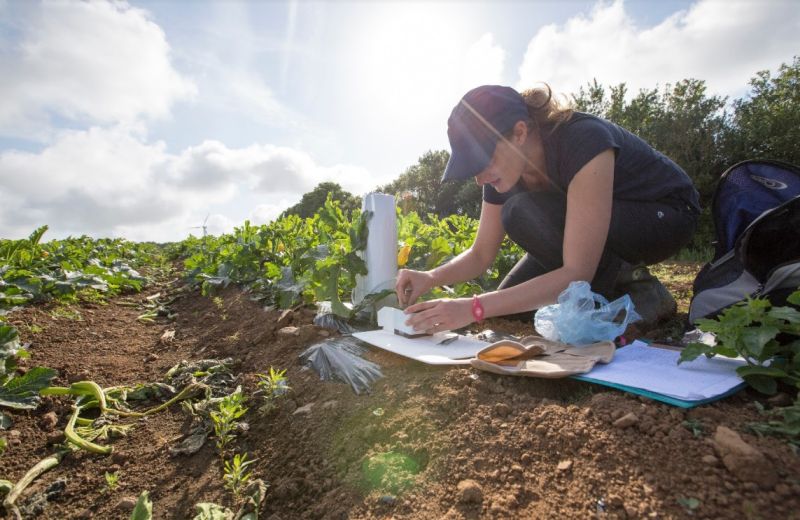
The effectiveness of pollinators and wildflowers has been highlighted in a new study which shows that crop yields of courgette increased by 39% with their help.
That additional yield could have been worth £3.6 million to the 2017 courgette crop, with pollination services valued around £3,400 a hectare.
Results from the University of Exeter, funded by AHDB Horticulture, also showed there was no significant difference in crop yield when humans pollinated each flower by hand compared to natural levels of pollination, showing how effective bees are with zero labour costs.
It revealed the value of pollination services to courgettes, finding that wildflower field margins can improve bee species’ work while aiding their conservation.
Wildflowers help maintain healthy bee populations and in courgette field margins, they were shown to attract bees into the crop, helping to provide stable long-term services across growers’ land.
This understanding enables growers to make informed planting decisions, which benefit both crop yield, bee population levels and the environment, before the 2019-growing season begins.
The research was led by Dr Jessica Knapp from the University of Exeter, who said: “We set out to develop a clear understanding of courgette pollinators’ behaviour and the crop’s requirement for pollination. These findings could also relate to all crops within the cucurbit family, such as pumpkins, watermelon, and cucumber.
“Early season courgette crops flower when bumblebee foragers are most active, which boosts the number of pollinators in the crop. Bumblebees also loosely carry pollen grains on their bodies, aiding pollination as they make visits from flower-to-flower.
“Notably, wildflower field margins did not create a distraction to bees’ pollination work. They are an effective way of attracting pollinators into courgette fields and will help to conserve these important agricultural species,” Dr Knapp added.
Courgette nectar and pollen measurements were taken to simulate bee population dynamics in ‘virtual landscapes’ with courgette fields present, using a bumblebee population model called 'BEE-STEWARD'.
Pollination rates and the abundance and diversity of pollinators were measured across 23 different study sites with most based in Cornwall, and some in Worcestershire and Cambridgeshire.
The research also showed that honeybees and buff-tailed bumblebees are the most abundant pollinators of courgette.
